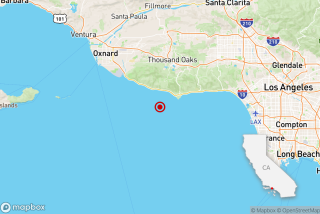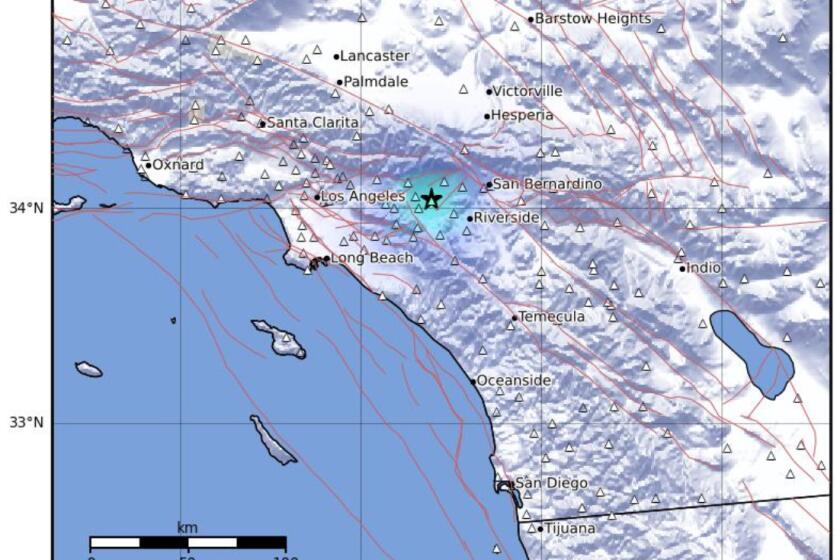Dozens of Aftershocks to 1994 Quake Shake Region
A vigorous swarm of aftershocks of the Northridge earthquake continued to shake the Los Angeles area Tuesday, but scientists held to their view that, after eight years, the sequence is nearing its end.
The flurry of more than 45 quakes began Monday night and extended into the next day. As of Tuesday evening, there had been 15,714 aftershocks of the 6.7-magnitude Northridge quake of Jan. 17, 1994, according to a compilation by Matt Gerstenberger of the U.S. Geological Survey.
Of these, 11 have been magnitude 5.0 or greater, 57 have been 4.0 to 4.9, and 438 have been 3.0 to 3.9, Gerstenberger said.
The strongest quake in the present spate of aftershocks was a moderate 4.2 at 9:53 p.m. Monday, which was not enough to cause any appreciable damage or any injuries. Later, there were quakes of 3.9, 3.8 and 3.6, among others.
All of Monday’s and Tuesday’s quakes were centered in the Santa Susana Mountains between the Simi and Santa Clarita valleys, about six miles northeast of Simi Valley and six miles west of Valencia.
Striking the same area was a swarm of 139 quakes, the strongest a magnitude 5.1, that occurred on April 26 and 27, 1997. Those quakes, which were a little deeper than the more recent ones, caused some minor damage.
Monday’s and Tuesday’s quakes were felt from Santa Barbara to downtown Los Angeles, east to Arcadia and north to Mojave.
Lucy Jones, the scientist in charge of the Geological Survey’s Pasadena office, said Tuesday that quakes in the same geographic zone as a quake like the deadly Northridge temblor are considered aftershocks as long as their rate of occurrence is greater than the rate of quakes occurring before the main event.
That remains true of the Northridge sequence, although the frequency has slowly declined in the last eight years and is now only two to three times the normal rate.
“Still, we’re not out of that window yet,” Jones said. “People are surprised at how long aftershocks last. The aftershocks of the 7.7 Tehachapi quake of 1952 lasted 40 years, and aftershocks from the 7.3 Landers quake of 1992 are still continuing.”
Could it be that a bigger event than the Northridge quake could yet occur out of this sequence?
It is not likely, Jones said. But, she added, “It’s always conceivable anywhere in California that you could have a larger quake than ever before.
“We’ve seen so little of the seismic history of this region,” she said, explaining that the intervals between big quakes on some faults can be hundreds of thousands of years.
Caltech seismologist Egill Hauksson, in a written analysis Tuesday, said the 4.2 quake Monday night was preceded by a 3.1 foreshock 20 seconds earlier.
The latest aftershocks may be on the Santa Susana fault and reflect increasing seismic stress in a region--known as the Ventura Basin--straddling the Ventura-Los Angeles county line that could eventually lead to a large quake, Hauksson said.
More to Read
Sign up for Essential California
The most important California stories and recommendations in your inbox every morning.
You may occasionally receive promotional content from the Los Angeles Times.










